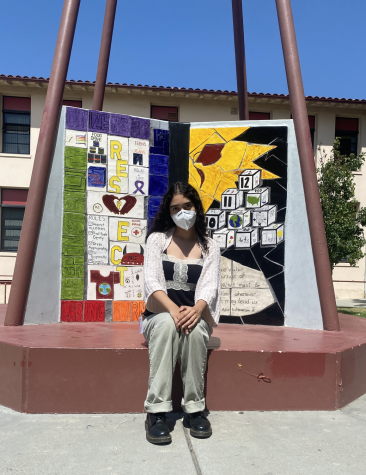Masha Amini and Iran’s Anti-Government Protest
October 12, 2022
On September 13, 2022, as Masha Amini—a 22-year-old Kurdish woman—and her family were visiting her uncle in Tehran, Amini was halted by Iran’s morality police: an Islamic special unit in Iran’s police department that enforces Islamic dress code on the public. The Guidance Patrol accused Amini of violating their country’s policy on attire and forced Amini into their vehicle, stating to her family that Amini would be taken to the police station for one hour of “re-education”. While her brother, Kiarash, waited outside of the education center for his sister, Amini was discretely taken to the hospital, unconscious. Amini was left in a coma and three days later, she was declared dead. Kiarash was told by the police that she suffered from a heart attack, but her mother claims this is false since her daughter was healthy and had no pre-existing health issues that would trigger this. Her condition prior to the detainment stirred allegations from her family that she had been beaten. Edited surveillance tape furthered this suspicion.
Her death triggered a public outrage; the final straw for many Iranians’ pent-up frustration with their government and their country’s crashing economy and suffering democracy. Protests immediately spurred on September 16, 2022, outside the hospital where Amini had passed away. As the news spread, protests emerged from all of Iran’s 31 Provinces. Women and men, young and elder, all gathered to protest against the extremity of the morality police and the punishment it executes; a union speaking up against the regime that restrains them from having a choice. Women burned their veils and cut and shaved their hair in rebellion. These protests eventually spread worldwide with Iranians from other countries speaking for their people. In support of these demonstrations, Canada placed sanctions on Iran because of their violation of human rights.
Iranian government officials have launched an investigation into Amini’s death, but when it came to the brewing protests, they responded with violence. Currently, there have been 133 known deaths, an estimated 900 casualties, and over 1,400 detainments made. Journalists make up those arrested, too, due to their documentation of these riots. Iranian authorities have also restricted internet access in areas where protests were established. It is evident that the government will not stop until the protest ceases. Iran’s interior minister, Ahmad Vahidi, prompted the judiciary to conduct a “quick, decisive, legal confrontation with the leaders and agents of these riots that will teach others a lesson”.



